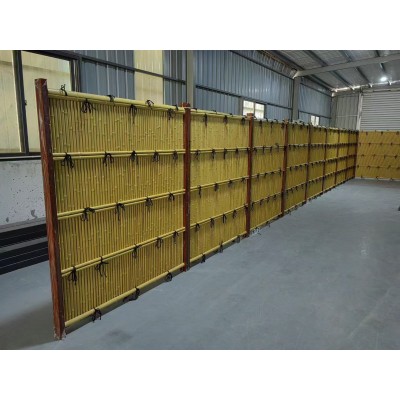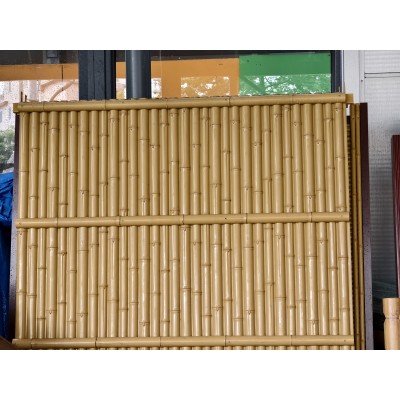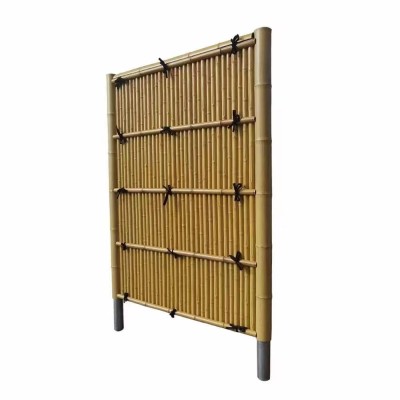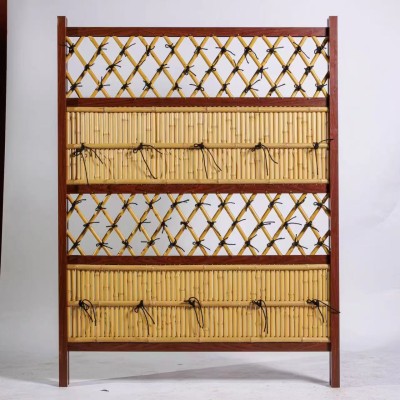The transformation of synthetic bamboo fence in tropical scenic spots
The transformation of synthetic bamboo fence in tropical scenic spots
Abstract: This paper focuses on the application and reform of synthetic bamboo fences in tropical scenic spots. Through the analysis of its development history, characteristics and application advantages in tropical scenic spots, this paper expounds the changes experienced by synthetic bamboo fence in materials, design and function, discusses the impact of these changes on landscape construction, ecological protection and tourism experience of tropical scenic spots, and forecasts its future development trend. The purpose is to provide reference for the further development of landscape facilities in tropical scenic spots.
I. Introduction
Tropical scenic spots attract a large number of tourists with their unique natural scenery and rich ecological resources. In the landscape construction of these scenic spots, bamboo fence, as a traditional landscape element, has profound cultural heritage and unique aesthetic value. However, natural bamboo faces many challenges in the tropics, such as vulnerability to pests and decay. Synthetic bamboo fence came into being. It not only inherits the aesthetic appearance of traditional bamboo fence, but also experiences significant changes in tropical scenic spots with its superior performance, and gradually becomes an important part of landscape construction.
Second, the background and current situation of the application of synthetic bamboo fences in tropical scenic spots
(1) Limitations of traditional bamboo fences
The high temperature and rainy climate conditions in tropical areas make natural bamboo fences vulnerable to moth, mildew and rot. For example, in some tropical rainforest scenic spots, traditional bamboo fences may suffer structural damage in just a few months, affecting their service life and landscape effect. Moreover, the supply of natural bamboo is limited by seasons and regions, and it is difficult to meet the needs of large-scale landscape construction.
(2) The rise of synthetic bamboo fences
With the development of materials science, synthetic bamboo fence has gradually attracted attention due to its advantages such as weather resistance, corrosion resistance and sustainability. It can simulate the appearance and texture of natural bamboo, while overcoming the shortcomings of natural bamboo. At present, in many tropical scenic spots, synthetic bamboo fences have been widely used in scenic boundary signs, trail fences, landscape pieces and so on.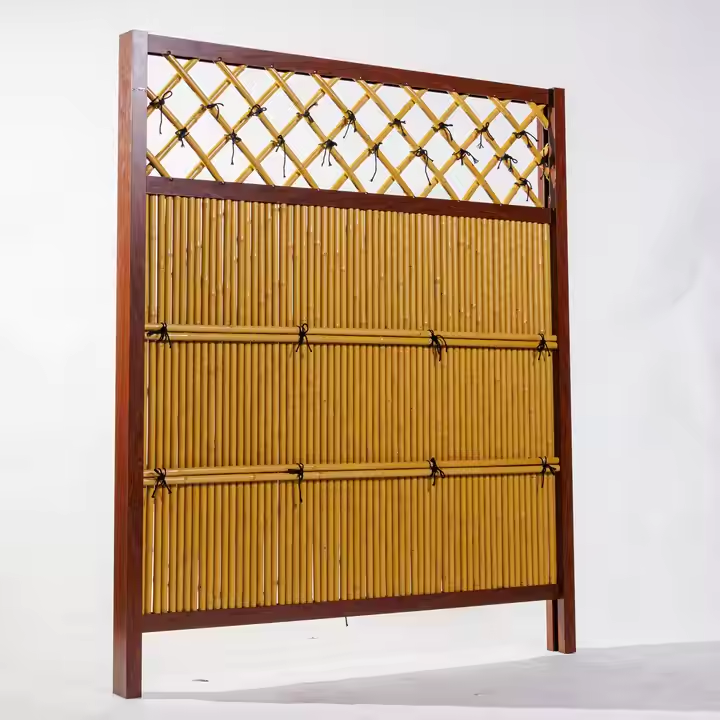
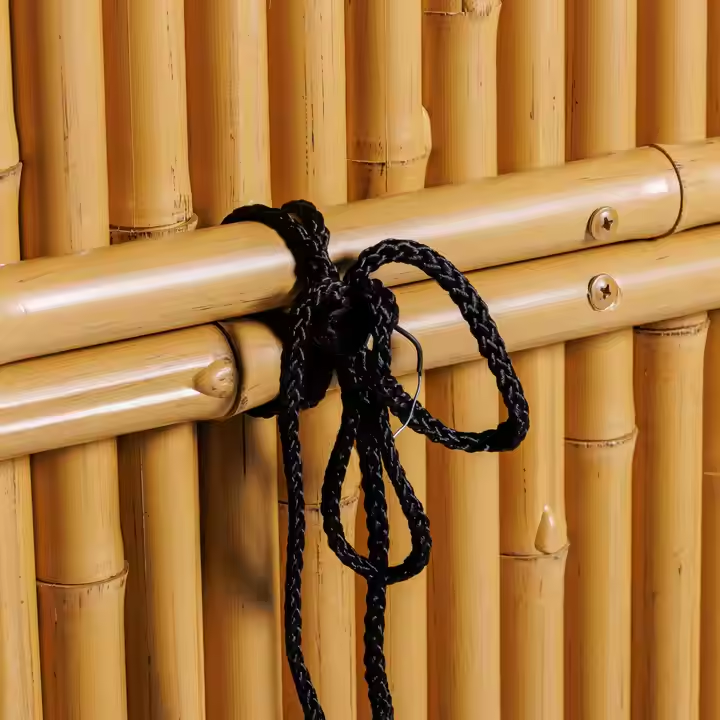
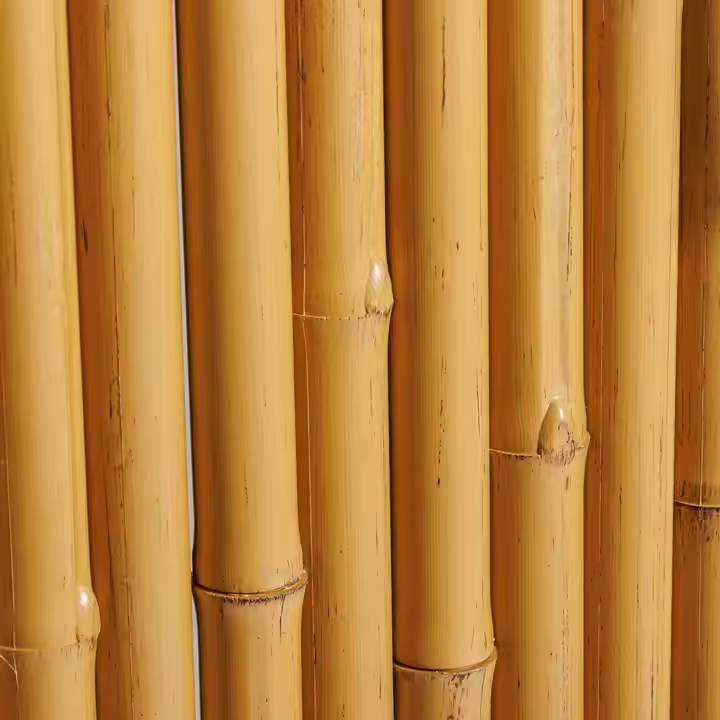
Third, the transformation of the synthetic bamboo fence
(1) Material reform
Early material exploration: The original synthetic bamboo fence was mostly made of plastic material, although it had certain water resistance and insect resistance properties, but there was still a big gap between the texture and strength of natural bamboo. This kind of plastic synthetic bamboo fence has a single color and a stiff appearance, which can not be well integrated into the tropical natural landscape.
Application of new composite materials: Nowadays, synthetic bamboo fences are mostly made of high-performance composite materials, such as the combination of glass fiber reinforced plastic (FRP) and bamboo fiber. This material not only has good strength and toughness, can withstand severe weather such as strong winds that may occur in tropical areas, but also closer to natural bamboo in texture, through special process processing, can present the texture and color of bamboo, greatly improving the landscape effect.
(2) Design reform
From single to diversified: the design of the early synthetic bamboo fence is relatively simple, mostly straight bars or simple squares. With the improvement of landscape aesthetics, design has become more diverse. In tropical scenic spots, there are curved shapes that imitate the natural bamboo forest form, as well as characteristic pattern designs that combine local cultural elements. For example, in some tropical scenic spots with ethnic customs, traditional local totem patterns are integrated on synthetic bamboo fences, enhancing the cultural connotation of the landscape.
Modular and customized design: In order to improve construction efficiency and meet the individual needs of different scenic spots, the synthetic bamboo fence began to adopt modular design. Individual modules can be quickly assembled and disassembled for easy transportation and installation. At the same time, customized services are becoming more common, and scenic spots can customize synthetic bamboo fences of specific sizes, colors and shapes according to their own landscape planning and theme needs.
(3) Functional reform
From simple protection to multi-functional integration: Traditional bamboo fences are mainly used for isolation and protection. Modern synthetic bamboo fences have expanded their functions in tropical scenic spots. For example, some synthetic bamboo fences have built-in lighting systems to provide lighting for scenic walks at night, which not only ensures the safety of tourists, but also creates a unique night scene atmosphere. There are also synthetic bamboo fences that combine the function of rainwater harvesting to provide irrigation water for surrounding plants during the dry season, reflecting the concept of ecological protection.
Strengthening of eco-friendly functions: The synthetic bamboo fence pays more attention to eco-friendliness in the material selection and production process. Some new synthetic bamboo fences are made of biodegradable materials, reducing the long-term impact on the environment. At the same time, the design also takes into account the protection of the local ecosystem, such as the gap design of the bamboo fence, which provides a space for small animals to pass and inhabit, and promotes the balance of the ecosystem.
Fourth, the impact of the transformation of synthetic bamboo fence
(1) Impact on landscape construction
Improving the quality of the landscape: The changes in the materials and design of the synthetic bamboo fence make it better integrated into the tropical natural landscape, adding a natural and primitive atmosphere to the scenic area. The diverse design and color choices enrich the landscape level and enhance the overall landscape quality. For example, in some coastal tropical scenic spots, the synthetic bamboo fence landscape sketches set against the blue sea and blue sky have become popular spots for tourists to take photos and clock in.
Creating a distinctive landscape image: Through the design of local cultural elements, the synthetic bamboo fence helps to create a unique landscape image of the tropical scenic spot. It has become a carrier for spreading local culture, enabling tourists to have a deeper understanding of local culture during the tour, and enhancing the cultural attraction of the scenic spot.
(2) Impact on ecological protection
Reduce dependence on natural bamboo: The wide application of synthetic bamboo fences reduces the demand for natural bamboo harvesting in tropical areas, which is conducive to protecting the local bamboo ecosystem and maintaining biodiversity.
Promoting sustainable development: The enhancement of its eco-friendly functions, such as rainwater harvesting and the application of degradable materials, is in line with the concept of sustainable development and helps tropical attractions achieve a better balance between tourism development and ecological protection.
(3) The impact on tourism experience
Enhance the safety of tourists: The lighting and protective functions of multi-functional synthetic bamboo fences provide better security for tourists' activities in the scenic area, especially at night or in areas with complex terrain, so that tourists can visit more safely.
Enrich visitor experience: The unique design and cultural connotation make the synthetic bamboo fence an important window for visitors to understand the local culture and landscape characteristics. Tourists can enjoy the natural landscape at the same time, but also feel the charm of culture, enrich the travel experience.
Fifth, the future development trend of synthetic bamboo fences in tropical scenic spots
(1) Intelligent development
With the development of Internet of Things technology, synthetic bamboo fences are expected to achieve intelligence. For example, using sensors to monitor the structural health of bamboo fences in real time to detect potential damage risks; It can also be connected with the intelligent management system of the scenic spot to achieve remote control of lighting, irrigation and other functions to improve the management efficiency of the scenic spot.
(2) Integration with new technologies
Further integration with new materials and manufacturing technologies, such as 3D printing technology, may enable more complex and personalized design and production of synthetic bamboo fences. At the same time, the application of nanotechnology may give synthetic bamboo fences more special properties, such as self-cleaning, antibacterial, etc., to further improve its adaptability in tropical environments.
3. Deepening ecological development
In the future, the synthetic bamboo fence will pay more attention to ecology, develop more environmentally friendly and sustainable materials, optimize its ecological function, such as through the plant symbiosis system, to achieve a more efficient ecological cycle, and make greater contributions to the ecological protection and sustainable development of tropical attractions.
Vi. Conclusion
Synthetic bamboo fences have experienced profound changes from material, design to function in tropical scenic spots. These changes not only improve its adaptability and landscape effect in the tropical environment, but also have a positive impact on the landscape construction, ecological protection and tourism experience of tropical scenic spots. With the continuous progress of science and technology, synthetic bamboo fences are expected to develop in the direction of intelligence, deep integration with new technologies and ecological depth in tropical scenic spots, bringing more innovation and opportunities for the construction of tourist landscapes in tropical areas. Scenic area managers and relevant practitioners should pay attention to these development trends, and rationally apply synthetic bamboo fences to achieve sustainable development of tropical scenic spots.
